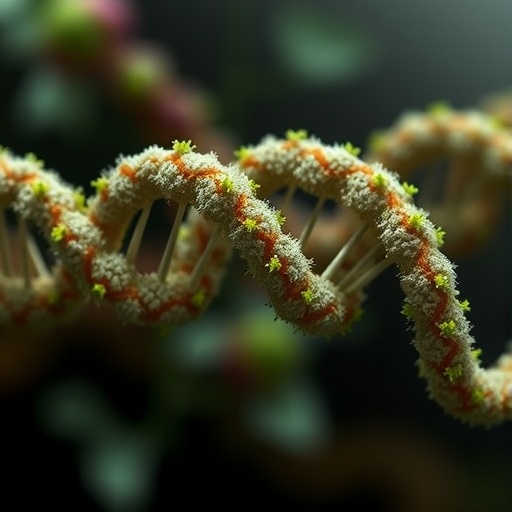In the realm of genomics and microbiology, a significant concern has resurfaced, drawing the attention of scholars and scientific communities worldwide. A recent study conducted by a team of researchers led by A.O. Granados-Casas, along with Fernández-Bravo and Stchigel, revealed troubling findings regarding the contamination of fungal genomes within the Onygenaceae family (Phylum Ascomycota) present in public databases. This study, published in BMC Genomics, not only underscores the prevalence of this issue but also delves into its implications for research integrity and the future of fungal genomics.
Genomic contamination is not a new phenomenon; however, its impact on data reliability has far-reaching consequences. The researchers employed a combination of genomic sequencing and bioinformatics tools to investigate the extent of contamination across various public databases, shedding light on a problem that has quietly persisted beneath the surface of scientific inquiry. Fungal genomes serve as crucial resources for understanding biodiversity, ecology, and potential applications in medicine and biotechnology, making their integrity essential.
The primary focus of the study was to assess the incidence of contamination in publicly accessible genomic databases, a hotbed for researchers relying on accurate genomic information. What the team found was alarming, illustrating that erroneous or misleading data could potentially lead to flawed conclusions and misguided research efforts in the field of mycology. The researchers utilized high-throughput sequencing and comprehensive alignment methodologies to identify contamination markers, setting a new standard for genomic data analysis.
A particularly noteworthy aspect of this research is its comprehensive approach. The researchers did not merely pinpoint instances of contamination; they also classified the types of contaminants they encountered. This classification ranged from low-level contamination, which might go unnoticed, to high-level discrepancies that can skew research outcomes significantly. By categorizing these contaminations, Granados-Casas and his colleagues shifted the narrative, positioning genomic contamination as not just an error, but a critically important issue that warrants urgent attention from the scientific community.
Alongside incidence assessment, the team presented methods for detecting contamination, offering a beacon of hope for researchers wary of the reliability of public genomic data. These methods entail advanced bioinformatics strategies, including the use of machine learning algorithms that can discern contaminated sequences from authentic ones. By employing such a rigorous approach, they provided an indispensable toolkit for future studies, allowing scientists to salvage integrity from compromised datasets.
Moreover, the researchers underscored the potential impact of contaminated fungal genomes on broader scientific endeavors. The findings bring forth a clarion call to re-evaluate the protocols for data curation and verification in genomic databases. As the reliance on these databases continues to grow, any oversight in ensuring data accuracy could lead researchers down a rabbit hole of misleading results, ultimately hindering advancements in fields like medicine, ecology, and biotechnology.
The implications extend beyond academic circles; they touch upon public health concerns as well. Contaminated genomic information could inadvertently influence decisions in disease management and the development of pharmaceutical interventions. The intricate relationship between accurate genetic information and therapeutic applications cannot be overstated, making this research timely and critical.
Furthermore, the researchers emphasized the role of collaborative efforts in addressing genomic contamination. They proposed the establishment of an international consortium aimed at safeguarding the quality of genomic databases. Such a consortium could not only implement best practices and standardized protocols for data submission but also foster a culture of accountability and transparency in the scientific community.
Public awareness also emerged as a key theme throughout the publication. The researchers urged the scientific community to communicate findings about genomic contamination effectively, ensuring that researchers, clinicians, and the public alike comprehend the significance of utilizing reliable genomic data. Educating stakeholders on the potential consequences of data contamination could spur more robust investment in data validation and the implementation of higher standards in genomic research.
In conclusion, the study conducted by Granados-Casas et al. serves as a critical reminder of the vulnerabilities within our genomic databases. In an era where data drives scientific inquiry and innovation, ensuring the accuracy of these datasets is paramount. As researchers continue to unravel the complexities of fungal genomes and their implications, the commitment to combat genomic contamination must be at the forefront of their efforts. This is not merely a technical issue; it is a foundational one that could shape the future of research across multiple disciplines.
As we reflect on the findings presented in this illuminating study, it becomes clear that actions are needed to curb the prevalence of genomic contamination. This awareness and proactive approach could transform our understanding of fungal genomics and ultimately lead to significant advancements in various scientific fields. The findings of this study are not just pertinent to researchers but are also a call to arms for anyone involved in the sciences to uphold the integrity of data as the cornerstone of credible research.
In summation, Granados-Casas and his team’s meticulous investigation into the contamination of fungal genomes within Onygenaceae has opened up essential discussions about data integrity, research methodologies, and collaborative strategies in genomics. The response to their findings will undoubtedly shape the future landscape of genomic data collection and utilization, ensuring that such databases remain reliable resources for scientific exploration and discovery.
Subject of Research: Contamination of fungal genomes of Onygenaceae in public databases.
Article Title: Contamination of fungal genomes of Onygenaceae (Phylum Ascomycota) in public databases: incidence, detection, and impact.
Article References: Granados-Casas, A.O., Fernández-Bravo, A., Stchigel, A.M. et al. Contamination of fungal genomes of Onygenaceae (Phylum Ascomycota) in public databases: incidence, detection, and impact. BMC Genomics 26, 1057 (2025). https://doi.org/10.1186/s12864-025-12223-3
Image Credits: AI Generated
DOI: https://doi.org/10.1186/s12864-025-12223-3
Keywords: contamination, fungal genomes, Onygenaceae, public databases, genomic integrity, data reliability, bioinformatics.




